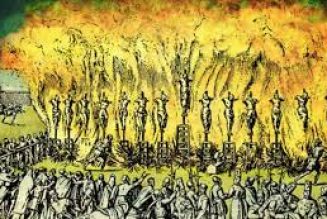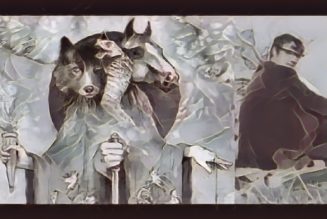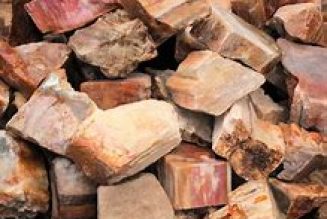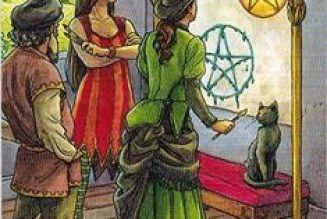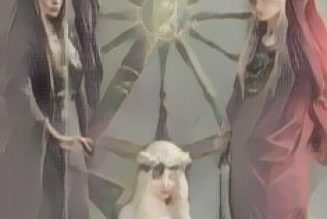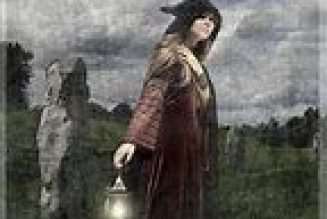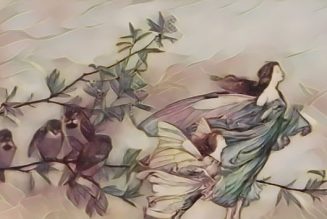The most likely derivation of the word ‘bonfire’ is that it was a ‘boonfire’ , that is, a fire for which the materials had been begged as a boon or gift. We still see this taking place in the weeks before our present-day bonfire celebrations on 5th November, when children come round seeking fuel for their bonfires. The latter, in commemoration of the Gunpowder Plot, have taken the place ·of the old Halloween bonfires, which from time immemorial had blazed at the end of October and beginning of November. A ritual bonfire was a favorite pagan method of celebrating a festival. The four great feast-days of the Celtic year, which have become the four Great Sabbats of the witches, were always occasions of ritual fire in one form or another. The Celtic names for these feasts were lmbolc, Beltane, Lughnasadh, and Samhain. They were held at the beginning of February, the beginning of May, the beginning of August, and the beginning of November, respectively. The Midsummer festival was also called Beltane, meaning ‘bright fire’ . In later years, these occasions became known as Candlemas (2nd February), May Eve (30th April), Lammas (1st August) and Halloween (31st October). There is something very magical about a bonfire, which somehow seems to invite people to dance round it. The flickering of the flames, the crackling of blazing twigs, the showers of golden sparks, the pungent scent of the wood-smoke, all evoke an atmosphere of cheerfulness and excitement. Also, the glowing fires in times past served the practical purposes of warmth, light, and facilities for cooking and roasting. The latter were necessary and doubtless welcome when people had come to the Sabbat from considerable distances, bringing provisions with them. In the thinly-populated countryside of olden times, big fires could be built in remote places, that provided enough heat for the traditional naked dances of the Sabbat, which so scandalized the Church. Old place-names often recall the sites of pagan bonfires. There are quite a number of Tan Hills or Tain Hills in Britain, deriving their name from the old Celtic teinne, meaning ‘fire’. Sometimes these sites, as in the case of the one near Avebury, have been Christianised as ‘St Anne’s Hill’ ; but the fair that was held on this hill was still called Tan Hill Fair, thus preserving the older name. Scottish place-names yield such examples as Ard-an-teine, ‘the light of the fire’ ; Craig-an-teine, ‘the rock of the fire’ ; Auch-an-teine, ‘the field of the fire’ ; Tillie-bet-teine, ‘the knoll of the fire’ ; and so on. In Cornwall, we find Lantinney, meaning ‘the enclosure of the fire’. The great time for bonfire festivals in Cornwall was Midsummer Eve, the second ‘Beltane’ in the Celtic year. Fires were lit from one end of the Duchy of Cornwall to the other, and the country people, old and young, danced merrily round them. Midsummer Eve was called ‘Witches’ Night’ ; but the pagan nature of the celebration was disguised by saying that the fires were built to protect against evil. For a time, the old bonfire celebrations in Cornwall were allowed to fall into disuse. However, in modern days people and societies interested in preserving old Cornish customs and the Cornish language, have revived them, and Midsummer Beltane blazes again from hill to hill. The Cornish word for it is Goluan, which signifies both ‘light’ and ‘rejoicing’ . The custom of the Midsummer bonfires was formerLy kept up all over Britain and recognized as having its origin in pagan fertility rites. Thus in Langley’s version of Polydore Vergil ( 1 546), we find the following : “Oure Midsomer Bonefyres may seme to have comme of the sacrifices of Ceres Goddesse of Corne, that men did solemnise with fyres, trusting thereby to have more plenty and aboundance of corne.” Midsummer bonfires were popular throughout Europe, and indeed still are in many places; though today they are officially held to celebrate St John’s Eve, which takes place on 23rd June. The purpose of many bonfire rituals was distinctly magical, apart from rejoicing. Thus in Hereford and Somerset, the Midsummer bonfires were lit to bless the apple trees; and the old country folk feared their crops might fail if they omitted this ceremony. In many places; the smoke from a bonfire kindled in the ancient way, by the friction of two pieces of wood, was a remedy against sickness among cattle, which were driven through the smoke for this purpose. Ritual fire produced in this way was called need-fire, from the old Saxon nied-fyr, meaning ‘forced fire’, that is, fire produced by friction. The ashes of ritual bonfires were lucky and protected against evil and ill-wishing. They were gathered up after the ceremonies, and mixed with the seed when it was sown, or scattered over the fields where the young plants were beginning to appear. The essential meaning of these old bonfire rites derives from fire as a symbol of life.
Bonfires
673 views














